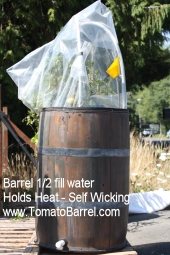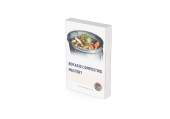
 1
1




Medicinal herbs, kitchen herbs, perennial edibles and berries: https://mountainherbs.net/ grown in the Blue Mountains, Australia




 1
1




Angelika Maier wrote:We have a piece of land which is heavy, poor, no drainage clay soil with some sand. We are weighing various plans to improve the soil. We already do plant nurse trees, mulch and the usual things.
How about a bigger bokashi? I watched some videos were people do bokashi in silage plastic.
We could pick up restaurant waste to feed it.
Does anyone have experience in what's happening if bokashi is dug into clay soil?
Some people say it's good in a worm farm others say it isn't.
I understand that bokashi is not compost and not a finished product.
Any input?
Long balcony garden in the green Basque Country
 1
1








Medicinal herbs, kitchen herbs, perennial edibles and berries: https://mountainherbs.net/ grown in the Blue Mountains, Australia
 5
5




Bokashi is Japanese for "Letting it be". And that's exactly the big advantage: this special type of compost heap doesn't need to be turned all the time to get the oxygen in, because it is an 'anaerobic' (no oxygen) compost heap.
Invasive plants are Earth's way of insisting we notice her medicines. Stephen Herrod Buhner
Everyone learns what works by learning what doesn't work. Stephen Herrod Buhner






 4
4




Long balcony garden in the green Basque Country




Dave de Basque wrote:
The only confounding factor might be allowing the liquid to escape. Poking holes in the bottom would turn it into single-use plastic, so yecch.
"Observe the lilies of the field, how they grow: they do not toil or spin, but I say to you that not even Solomon in all his glory was dressed like one of these."
Matthew 6:28b-29

| I agree. Here's the link: http://stoves2.com |







